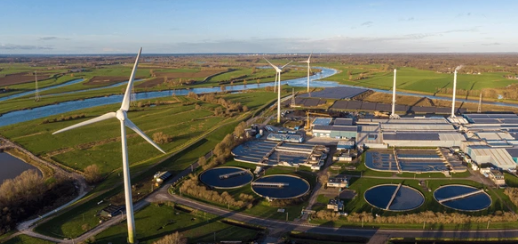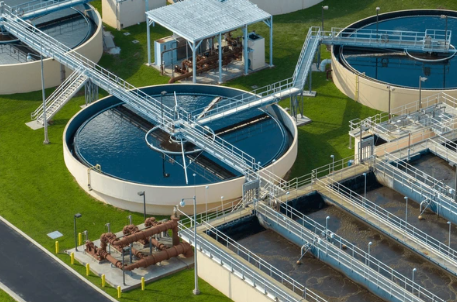
Managing water networks is a complex challenge that requires a deep understanding of existing infrastructures, precise planning of interventions, and effective coordination among various stakeholders. With increasing demands for safety, efficiency, and sustainability, network managers are seeking innovative solutions to optimize their operations. This is where SmartShape, with its digital twin technology and photogrammetry, comes into play.
What is Photogrammetry?
Photogrammetry is a technique that involves using photographs to measure and model objects and spaces. By taking photos from different angles and combining them using advanced software, it’s possible to create accurate 3D models. These models can then be used to analyze, plan, and manage complex infrastructures such as water networks.
The Challenges of Managing Water Networks
Managing water networks involves several major challenges:
- Complexity of Infrastructures: Water networks are often vast and complex, spanning large geographical areas with numerous connection points and interactions.
- Preventive and Reactive Maintenance: The need to keep the network in good working order, preventing failures and reacting quickly to incidents, requires efficient planning and execution.
- Safety and Compliance: Water networks must be managed in compliance with strict regulations to ensure the safety of water supply and environmental protection.
- Data Management: Data collected from sensors, inspections, and interventions must be centralized and analyzed for informed decision-making.
SmartShape and Photogrammetry: An Innovative Solution
SmartShape offers an innovative solution to these challenges by integrating photogrammetry into its digital twins. Here’s how this technology improves water network management.
1. Accurate and Comprehensive Modeling
Photogrammetry enables the creation of extremely accurate 3D models of water network infrastructures. These models include all the necessary details to understand the layout and condition of the installations. With SmartShape, these models can be visualized and analyzed intuitively, facilitating the planning and management of interventions.
2. Data Centralization and Accessibility
SmartShape centralizes all relevant data, whether it comes from photogrammetry, IoT sensors, 2D plans, or enterprise databases. This centralization allows for easy and quick access to all the information needed for managing water networks. Data is accessible in real time and can be shared among different stakeholders, enhancing collaboration and decision-making.
3. Predictive and Reactive Maintenance
Thanks to SmartShape’s modeling and analysis capabilities, predictive maintenance programs can be implemented. By continuously monitoring the state of infrastructures and analyzing the collected data, SmartShape helps anticipate failures and plan interventions before major problems occur. In case of an incident, digital twins enable rapid and effective responses by providing precise information on the condition and location of affected elements.
4. Enhanced Safety and Compliance
SmartShape’s digital twins integrate advanced security features to ensure the protection of sensitive data. Additionally, the ability to model and analyze infrastructures in detail helps ensure that all interventions and operations comply with current regulations. This is essential for ensuring the safety of water supply and minimizing environmental risks.
5. Cost and Resource Optimization
By improving the efficiency of water network management, SmartShape helps reduce operational costs. Predictive maintenance, precise intervention planning, and reduced downtime contribute to optimizing resource use and minimizing expenses. Additionally, the ability to centralize and analyze data allows for the identification of improvement opportunities and further savings.
6. Real-World Case Studies: Suez
A concrete example of SmartShape’s application in water network management is the project carried out with Suez. Suez used SmartShape to create a digital twin of its sewer network using photogrammetry. This digital twin covers more than 400 km and combines photogrammetric and BIM (Building Information Modeling) models.

The benefits of this project include:
- Knowledge Management: The digital twin allows for the centralization of all information about the sewer network, facilitating knowledge management and intervention preparation.
- Intervention Optimization: By providing accurate and up-to-date models of the infrastructures, SmartShape helps plan and execute interventions more efficiently, reducing costs and service interruptions.
- Safety Improvement: The ability to visualize and analyze infrastructures in detail ensures that all operations are carried out in compliance with safety standards.
Conclusion
Managing water networks is a complex field that requires innovative solutions to meet increasing demands for safety, efficiency, and sustainability. SmartShape, with its digital twin technology and photogrammetry, offers a powerful solution to these challenges. By enabling accurate modeling, data centralization, predictive maintenance, enhanced safety, and cost optimization, SmartShape transforms the way water networks are managed.
Concrete examples, such as the project with Suez, demonstrate the significant impact of this technology on managing critical infrastructures. By adopting SmartShape, water network managers can not only improve their current operations but also proactively and effectively prepare for future challenges.
Better understand the possibilities of SmartShape?
Schedule a demo

